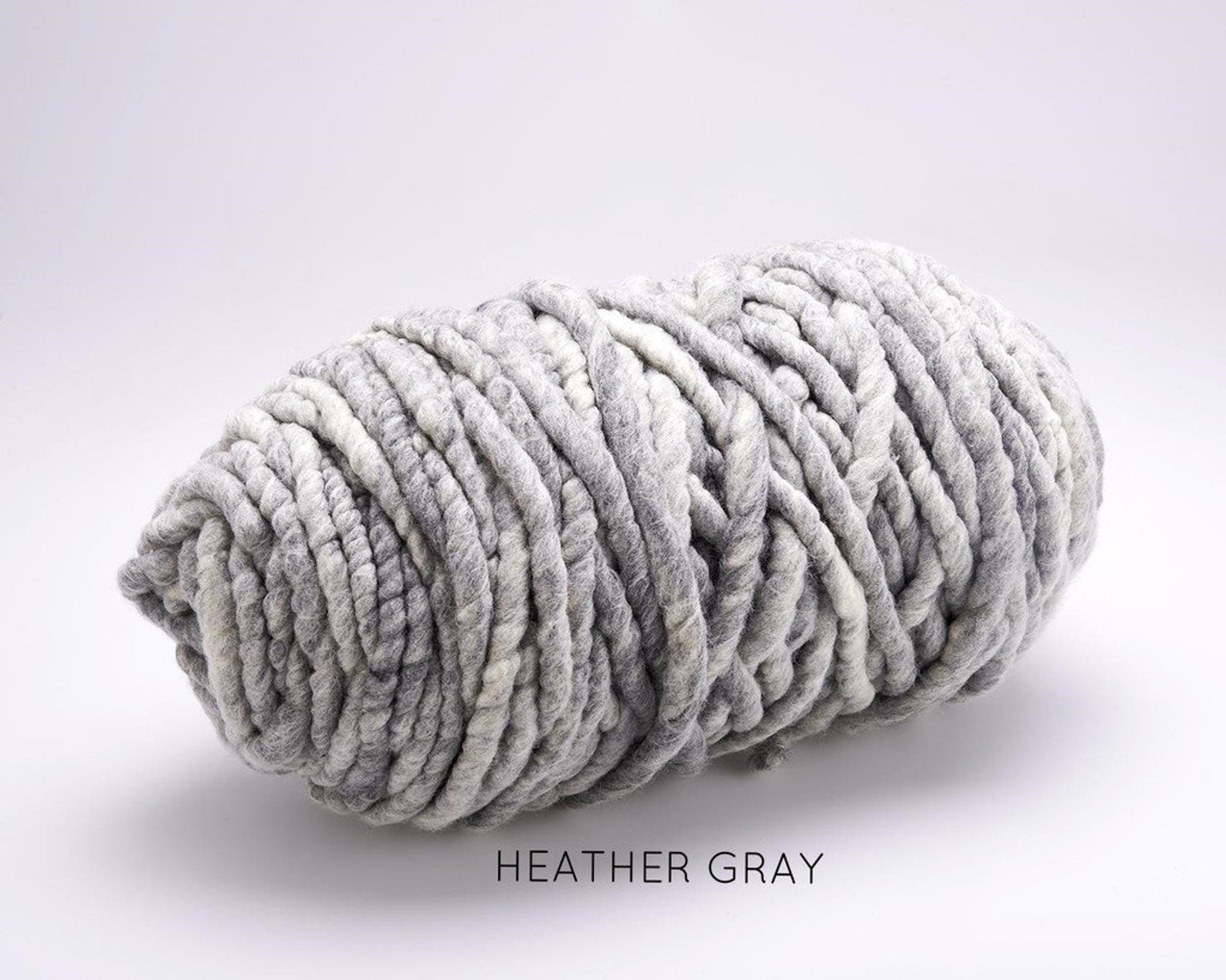

Regardless of whether you’re getting into arm knitting or looking for some incredibly thick yarn for a project, you need to decide what kind of chunky yarn is best suited for your needs. I advocate learning the long-tail cast-on first, but the knitted cast-on is also an excellent all-round cast-on that many new knitters have success with.How to choose the best chunky yarn for you Please do yourself a favor and learn another cast-on technique! Knitting your first row should be fun and exciting, not frustrating. That first row will be frustrating and unsatisfying, every single time. But the cast-on edge will be loose and sloppy, and the corner and edges of your knitwork will not look great either. It’s true that once you turn the work and start knitting the second row, you don’t see it as much as you would expect. The excess yarn will move with you, growing with every stitch and the final loop at the end of the row will be huge.

Some knitters will tell you that this is normal, and you should ignore the problem and keep knitting. … but then you start knitting the first row and things go wrong – with every stitch you make, the yarn connecting the needles grow longer.

Even experienced knitters will encounter the problem if they cast on more than a handful of stitches with this method. If you are not super careful, keeping the needle tips close together, then you create slack between the needles with every stitch you knit, and if you have more than a few stitches, the strand of yarn will grow to ridiculous lengths. The backward loop cast-on doesn’t create proper stitches, only loose loops of string wrapped around the needle, and that makes it very difficult to knit the first row after casting on. You have cast on using the backward loop cast-on or a variation thereof, and everything looked just fine… This is not a situation that new knitters are likely to encounter, but you might eventually come across it when you knit top-down sweaters or mittens. Instead it’s a highly specialized cast-on that you should only use when you are casting on a few extra stitches at the end of a row, or in the middle of a row. The backward loop cast-on is indeed very easy to learn and fast to do, but it’s not actually intended as a general cast-on that you do at the beginning of a project. Maybe somebody showed it to you, telling you that it’s the easiest method to cast on, or maybe you googled “easy cast-on” or something similar. If you are experiencing this problem, then you most likely casted on using the backward loop cast-on, or a variation of it. However, if you are a new knitter (or about to become one), then it’s a good idea to learn a single, all-purpose cast-on technique that will make it easy for you to knit the first few rows successfully, and get you started on your first knitting project. Learning a variety of cast-on methods is extremely useful, and you should absolutely explore this at some point of your knitting journey. For example, if you are knitting a pair of socks from the cuff down, you will want to choose an elastic cast-on so that you will be able to stretch the opening of the sock when you put it on, yet the sock stays snugly on your ankles. Each method looks a little different (or a lot different) from the rest, and each method has unique characteristics and uses. This is called casting on, and it can be done in at least a dozen different ways. There are many different Cast-On Methodsīefore you can start knitting, you need to create a number of stitches and put them on a knitting needle. Read on to learn what went wrong, and which cast-on method I recommend for new knitters. All you have to do is learn a better cast-on method that it is much easier to knit from, and then you will be knitting scarves in no time.
#Big loopy yarn not wool how to#
Somebody (I’m looking at you Google!) gave you bad advice when you were investigating/asking/googling how to cast on stitches and get started knitting. It doesn’t have to be this way AND IT’S NOT YOUR FAULT! Your excitement turns to frustration, and for many unfortunate would-be-knitters this is where the knitting adventure ends – failure on the first row. You knit a few more stitches, and it’s only getting worse.

You try to pull on the working yarn (the yarn connecting your last knitted stitch to the ball of yarn) to tighten things up, but it doesn’t seem to help. But after only a few stitches you notice that the strand of yarn connecting the knitting needles is growing with every stitch you make.
#Big loopy yarn not wool full#
You have learned how to cast on, and full of excitement you begin knitting your first row.


 0 kommentar(er)
0 kommentar(er)
